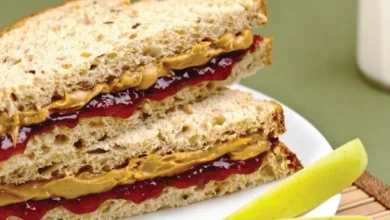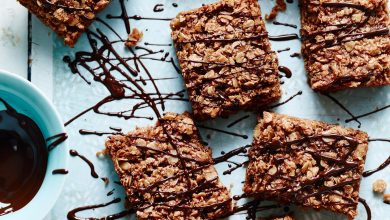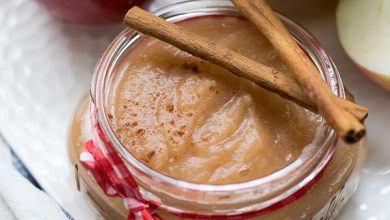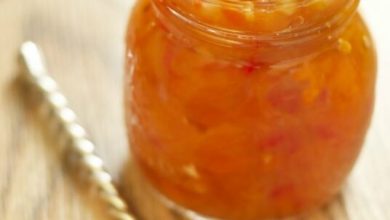Amazing Rib Eye Steaks With Marsala Sauce
🥩🍷 Amazing Rib Eye Steaks With Marsala Sauce 🍷🥩
History:
The combination of succulent rib eye steaks and rich Marsala sauce is a classic Italian-inspired dish that has evolved over time. Marsala sauce itself is named after the Italian city of Marsala in Sicily, known for its fortified wine. The sauce gained popularity in the 18th century and was traditionally served with chicken or veal. Today, it has found its way into many steak recipes, creating a mouthwatering fusion of flavors.
Components:
- Rib Eye Steaks: Rib eye steaks are known for their marbling, tenderness, and rich flavor. They are the star of this dish.
- Marsala Wine: Marsala wine is a fortified wine with a sweet, nutty flavor that adds depth and complexity to the sauce.
- Mushrooms: Sliced mushrooms are often included in the sauce, providing earthy notes and a delightful texture.
- Shallots or Onions: These aromatic vegetables are used to add a subtle sweetness and depth to the sauce.
- Beef Broth: Beef broth or stock forms the base of the sauce, enhancing its savory character.
- Butter and Olive Oil: These are used for cooking the steaks and sautéing the shallots and mushrooms.
- Seasonings: Salt, pepper, and fresh herbs like thyme or rosemary are used to season the steaks and sauce.
Steps to Prepare:
-
Preparation:
- Take the rib eye steaks out of the refrigerator about 30 minutes before cooking to bring them to room temperature.
- Season both sides of the steaks generously with salt and pepper.
-
Searing the Steaks:
- Heat a skillet or pan over high heat and add a combination of butter and olive oil.
- When the fat is hot and sizzling, add the steaks to the pan.
- Sear the steaks for about 3-4 minutes on each side for medium-rare (adjust cooking time based on your desired doneness).
- Remove the steaks from the pan and let them rest on a plate.
-
Making the Marsala Sauce:
- In the same pan, add more butter if needed, and then add sliced shallots or onions and sliced mushrooms.
- Sauté them until they become tender and browned.
- Pour in Marsala wine and let it simmer for a few minutes to reduce and concentrate the flavors.
- Add beef broth and fresh herbs, and continue simmering until the sauce thickens.
-
Finishing Touches:
- Return the seared steaks to the pan with the Marsala sauce and let them heat through.
- Spoon the sauce over the steaks as they warm up.
-
Serving:
- Plate the rib eye steaks, pouring the Marsala sauce and mushrooms over the top.
- Garnish with additional fresh herbs if desired.
Time Needed:
The total time needed to prepare Amazing Rib Eye Steaks With Marsala Sauce can vary depending on factors such as the thickness of the steaks and your desired level of doneness. On average, it takes approximately 30-40 minutes to make this delicious dish, including prep time and cooking time.
Enjoy your delectable Rib Eye Steaks With Marsala Sauce! 🍽️🍷🥩
While I can’t provide exact nutrition facts without specific quantities and brands, I can offer some general health information about Rib Eye Steaks With Marsala Sauce.
-
Protein: Rib eye steaks are a good source of high-quality protein, essential for muscle growth and repair.
-
Calories: Rib eye steaks are relatively high in calories due to their marbling and fat content. Marsala sauce, made with wine and butter, also adds calories.
-
Fat: Rib eye steaks are known for their marbling, which means they contain a significant amount of saturated fat. While fat is essential for flavor and satiety, it’s advisable to consume them in moderation.
-
Vitamins and Minerals: Steaks provide essential nutrients like iron, zinc, and B vitamins, which play roles in various bodily functions.
-
Marsala Sauce: Marsala wine, used in the sauce, contains antioxidants like resveratrol. However, the sauce also includes butter, which is high in saturated fat.
-
Portion Control: To keep the meal healthier, consider controlling portion sizes. A standard serving of steak is typically around 3-4 ounces, and you can use a smaller amount of sauce to limit calorie intake.
-
Sides: Consider serving the steak with a variety of vegetables or a salad to increase fiber and micronutrient intake.
-
Healthier Cooking Methods: You can opt for grilling or broiling the steak to reduce the need for added fats. For the sauce, use less butter or substitute with olive oil for a healthier fat source.
Remember that the nutritional content can vary depending on the specific ingredients and portion sizes you use. If you have dietary restrictions or specific health concerns, it’s a good idea to consult with a registered dietitian or nutritionist for personalized guidance on incorporating this dish into your diet.








